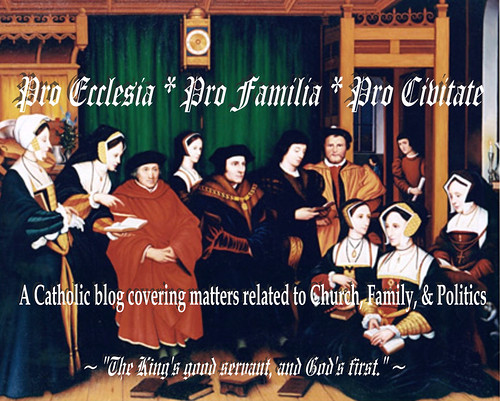London: Plans Unveiled for Memorial to Pre-Reformation Shrines [UPDATED]
(Hat tip: Jeffrey at The Roving Medievalist and Fr. Ray Blake)

Final plans have been unveiled for the memorial to the pre-Reformation English shrines that I first blogged about here:
Plans for a memorial to the medieval shrines destroyed during the Reformation, were unveiled yesterday at Charterhouse.
The sculpture by Paul Day, commissioned by the Art and Reconciliation Trust, (ART) will be placed close to the site of Chelsea Manor, once home of St Thomas More and his family. After More was executed for his faith in 1535, his house was given to the Lord Chamberlain, Sir William Sandys. In 1538 Sir Thomas Cromwell moved there in order to avoid the plague that was raging in central London. Cromwell was masterminding the dissolution of the monasteries and destruction of monastic churches and shrines at that time. In order to make sure that all the looted statues were destroyed, Cromwell ordered that they should all be brought to Chelsea Manor and burnt in a huge bonfire that he could personally witness. Among the statues lost was Our Lady of Walsingham, a shrine which ranked fourth after Rome. Jerusalem and Compostella, the Black Madonna of Willesden and Our Lady of Grace of Ipswich.
***
The unveiling of the memorial is due to take place on 13 October 2009, the feast of Edward the Confessor. This will be preceded by an ecumenical service in Westminster Cathedral.
For more information, or to make a donation, visit: www.artandreconcliation.org.
[More]

My Comments:
The full artwork for the memorial (above), along with some very interesting details about the project, can also be viewed in the downloadable Arts and Reconciliation brochure (pdf).
It seems the final plans for the monument have changed somewhat from the original rendering (below), but the basic concept is still there.

Unfortunately, the Walsingham aspect and medieval iconography seem to have been de-emphasized in favor of
"simplifying the overall form of the sculpture thus emphasising the universal nature of its theme through the use of a recognisable contemporary setting".My own opinion is that the changes to the artwork deprive the memorial of its historical context and make it more of a multi-cultural statement on religious persecution in general. The Art and Reconciliation brochure concedes as much:
It is this design that ART proposes to reproduce in twelve countries where similar persecution has taken place.I personally think it unfortunate that they didn't stick with the original plans, and that the memorial won't even be unique to either England or to the English Reformation.
Nevertheless, it's still a beautiful monument, and the mere fact that this memorial is getting done is itself a near miracle and quite wonderful news.
UPDATE
Joanna Bogle was there for yesterday's launch of the project.
Previous Pro Ecclesia posts on this subject:
A Memorial in Chelsea to the Marian Shrines Destroyed in the English Reformation
Labels: Anti-Catholicism, Art, Catholic Identity, Devotionals, England, History, Our Blessed Lady, Religious Persecution, Saints and Martyrs, St. Thomas More, Walsingham



2 Comments:
This is one of those situations where I truly say "de gustibus," and mean it.
I like the depiction of the Blessed Mother and young Jesus better in the final version. In fact, the final version seems more "immediate," for lack of a better term. Jesus' outstretched hand pleads for a stop to it, which is very powerful.
And if it helps people think of persecution worldwide, that can be a definite plus.
Dale,
I agree with your take that the depiction of the Blessed Mother and Our Lord in the final version is preferable to the original.
It's the rest of the monument that I think should have retained the architecture evocative of the Shrine at Walsingham.
The final version could easily be mistaken as representative of a bombed-out shell of a modern building (which could evoke in the minds of many WWII) as opposed to a religious site destroyed by iconoclasts during the Reformation.
Post a Comment
<< Home